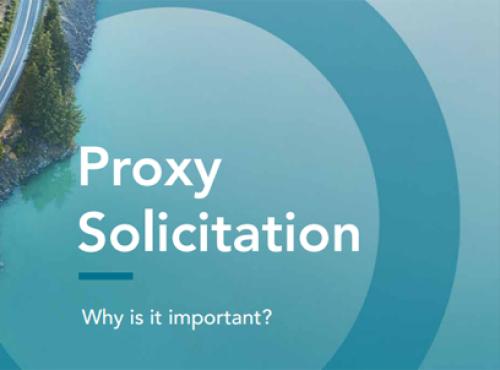A roundup of academic research from the world of IR studies
Presenting at an analyst-sponsored conference can boost liquidity and lower cost of capital, but only if your company has sufficient trading beforehand. ‘Firms that are severely illiquid for fundamental reasons do not enjoy a reduction in cost of capital simply by attending a conference,’ says study co-author Musa Subasi, a PhD candidate at the University of Texas. ‘On the other hand, firms that are already relatively liquid become less sensitive to market-wide liquidity shocks following a conference.’
In another study, Subasi investigated whether attending conferences gave institutional investors an edge regarding takeover targets. He found the largest funds do enjoy an advantage, being significant net buyers in conference presenters in the year before the M&A announcement.
Subasi uncovered another intriguing fact: on average, firms that do conference presentations get a larger takeover premium than those that don’t. Sampling takeover activity from 2004 through 2010, Subasi finds the premium for targets that did no pre-M&A conference presentations was 23.36 percent; for those that did, it was 34.56 percent.
‘The more companies attend conferences, the larger their takeover premium,’ says Subasi. ‘It’s a beneficial outcome of increased investor recognition, and should provide strong incentives to reach out to a larger investor base.’
The format is the message
A company’s choice of numerical format in disclosures has significant effect on investor risk judgments, according to recent studies.
When asked to evaluate a firm’s commodity price risk, test subjects believe a firm using percentage format faces lower risk than one using dollar format.
The study’s authors note that few investors are likely to consider or even be aware of management’s flexibility in this particular area. But they add that once investors become aware of the formatting discretion, ‘risk assessments in response to dollar formats decrease, as if investors are rewarding management for choosing a dollar format, while risk assessments in response to percentage formats increase, as if they are concerned about the potential for management obfuscation.’
‘If investors are concerned disclosure might be shady in some way, they will focus more on format and our effect reverses, with percentages perceived as much more risky than dollars,’ explains study co-author Kathy Rupar, assistant professor at the University of Florida.
She recommends companies use both formats: ‘That way investors are less likely to have a biased response to disclosures.’
Short-sited firms
Major companies in Egypt, Tunisia, Morocco, Nigeria and Kenya are behind the curve when it comes to online IR, according to a South African study. A comparison of websites in 2006 and 2010 reveals hardly any improvement: the sample of the 40 largest firms in each country shows one in five has no website and most of the rest are pretty poor.
‘These firms are either negligent, do not regard it as important to communicate information to investors via corporate websites, or do not realize the benefits of communicating in this manner,’ conclude the report’s authors.
This article appeared in the October print edition of IR magazine.










